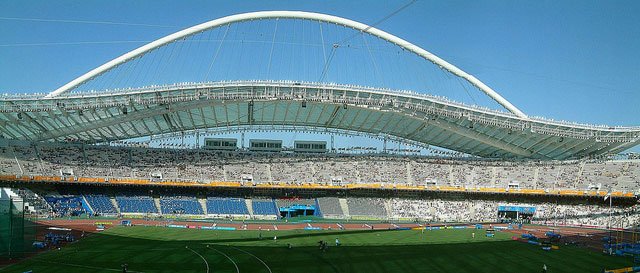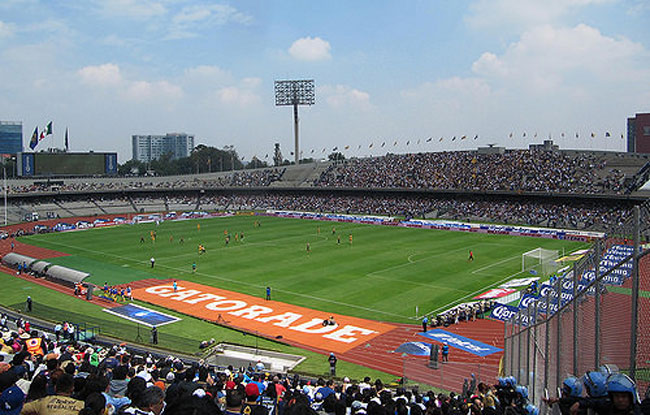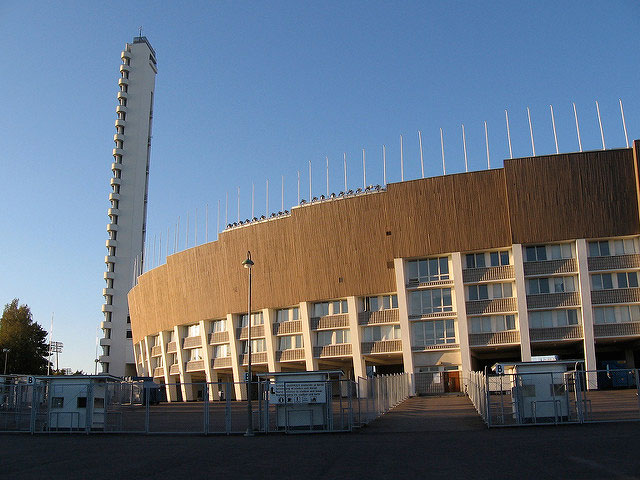The history of the Olympic Games dates back to the 8th century. However, the Olympic Games received its second lease of life in 1896. This historically valued games event certainly comes as a great treat to sports enthusiasts across the globe. However, most of us are fully aware of the amount of efforts that go towards the preparation in staging these events. Do you know that there is a whole new stream of architecture has been evolving around the Olympic stadiums? Architecture of the Olympics could be considered a very niche specific architecture that inspires many architectural feats that emerge across the globe after the Olympic Games. Given the importance of the event and the attention the events draw, architects but their best efforts possible in coming up with most stunning stadiums. Let us look at some of the most popular Olympic stadiums and structures from around the world.
The Olympics Stadium, Athens

The Athens Olympics Stadium is named after Spyros Louis, the 1896 winner of Olympic marathon winner. This stadium is located in Marousi, Athens. This stadium was completed in 1982. The 2004 Olympics held its opening and closing ceremonies in this stadium. One of the highlights of this stadium is its close to 1000 feet tubular arches made of steel. The modern design was done by the Spanish architect Santiago Calatrava who designed the tubular arches. Originally, the capacity of the stadium was 75,000 and after the renovation, it accommodates 71,000 people approximately. [Image Credit: ibolyka1 / Flickr]
Beijing National Stadium
This stadium is also popularly known as the Bird’s Nest. The stadium hosted the 2008 Beijing Olympics. Herzog and De Meuron, a Swiss company built this stadium working with Li Xinggang, the Chinese architect. The aesthetic curves of the stadium took its inspiration from the Chinese ceramic ware. Beijing National stadium was one of the much talked about stadium for its striking design and aesthetic appeal.
The Bird's Nest…Beijing National Stadium#architectural_wonders pic.twitter.com/XXGqeAghqY
— Stacy (@Belogiannis) April 19, 2016
Montjuic Communications Tower, Barcelona
This stadium was designed by Santiago Calatrava and the stadium was completed in 1992. The stadium hosted the 1992 Olympics and the construction of the tower took almost three years. The 446 feet tower in the Olympic park is designed to represent an athlete with the Olympic flame.
Amazing pic of the Montjuïc Communications Tower in #Barcelona designed by Santiago Calatr… http://t.co/Ie0b3Qz1Zl pic.twitter.com/Dzudab30Ld
— OK Apartment (@OKApartment) September 4, 2015
Olympic Stadium Munich, Olympiastadion
The 1972 summer Olympics was held in Olympiastadion. This stadium was designed by Frei Otto, Hermann Peltz, Carlo Weber and Gunther Behnisch. The top attraction of this stadium is its acrylic glass canopies, which are held by steel cables. The capacity of the stadium is 69,250.
#OA, organic architecture, #olympic stadium, #Munich pic.twitter.com/ODvytsLGT8
— Roni (@RoniGjyrezi) March 30, 2015
Olympic Stadium, Berlin
This stadium hosted the 1936 Olympics, an Olympics that took place during the time of Adolf Hitler. This stadium certainly emulates the Nazi architecture. This stadium somehow survived the war and it continues to host several sports events round the year including the 2006 FIFA World Cup.
Olympic Stadium Berlin today pic.twitter.com/Mg3w6Z8zYn
— Steve (@stevie1963) December 13, 2015
Estadio Olimpico Universitario Mexico City

Estadio Olimpico Universitario Mexico City hosted the 1968 Olympics. This stadium was however in use since 1952 and a popular venue for football matches. The attractive feature of this stadium is the volcano model and it was built over a stone volcanic platform. This stadium has a capacity of almost 69,000 people. The stadium is constructed within the area that is marked as cultural heritage. The stadium was designed by Augusto Perez Palacios along with Raul Salinas Moro and Jorge Bravo Jimenez. [Image Credit: worldstadiums.football / Flickr]
Olympic Stadium and Tower, Helsinki

Olympic stadium and Tower, Helsinki hosted the 1952 summer Olympics. The capacity of the stadium is 70,000 and it has an impressively tall tower, which measures 238 foot. This tower was designed by Yrjö Lindegren and Toivo Jäntti much earlier in 1938. This stadium is in Toolo district, which is part of the capital city Helsinki. This is the largest sporting venue in Finland. The stadium continues to host several other prestigious sprots events. [Image Credit: gloel / Flickr]
Aquatics Centre, London
This is an indoor stadium, which hosted 2012 summer Olympics. The Aquatics Centre hosts 160-foot swimming pools and 82-foot diving pool. Number of water sports events were held here including swimming and diving events. The stadium emulates fluid geometry of water in motion. Designed by Zaha Hadid the stadium has a massive 525-foot undulating roof. The Olympics capacity of the stadium was 17,500 spectators.
https://twitter.com/JamesOlympics/status/730344337482104832
An Early Look at the Architecture of the Olympics for Rio 2016
There are numerous other inspiring examples of innovative architecture for the Olympics. It will certainly make an interesting endeavor to study the underlying inspirational factors of these stadiums for the upcoming 2016 games. Let us look at what Rio the latest Olympics host has in store for fans. With the summer Olympics 2016 just round the corner, you could easily imagine the pressure that is mounting in Rio. Let us take a quick look at some of the preparations that are underway.
One of the largest venues for the event is Deodoro Olympic Park. The site is designated for 11 Olympics events and 4 Para Olympic events. This is not a new stadium but it has been used already for the Pan American games, and this venue was built in 2007. The Olympic authorities have had a tough time in converting this facility to meet the Olympics standards. This stadium is located on a steep terrain and it surrounded by railway, road ways and river crossing.
Rio2016 Deodoro Olympic Park! https://t.co/ypSkSfykHx
— carolina passos (@carolpos) May 10, 2016
The Youth Arena will be the place for the female basketball and fencing competitions. This facility will also be used as the athlete improvement training center. The aquatic center has been praised as a model of “sustainability.”
New Rio Olympics aquatic stadium??Natural ventilation system & nomadic architecture=a model of sustainability #mg334 pic.twitter.com/gQMCMW9JJc
— Emma Nolan (@emmznolan) April 9, 2016
Every country hosting host Olympics features some innovative architectural structures and stadiums to impress and to wow visitors from around the globe. Moreover, the hosts know for sure that all eyes will be on the hosting country during the entire duration for which the Olympics events take place in the country. No country would want to lose such a striking opportunity.